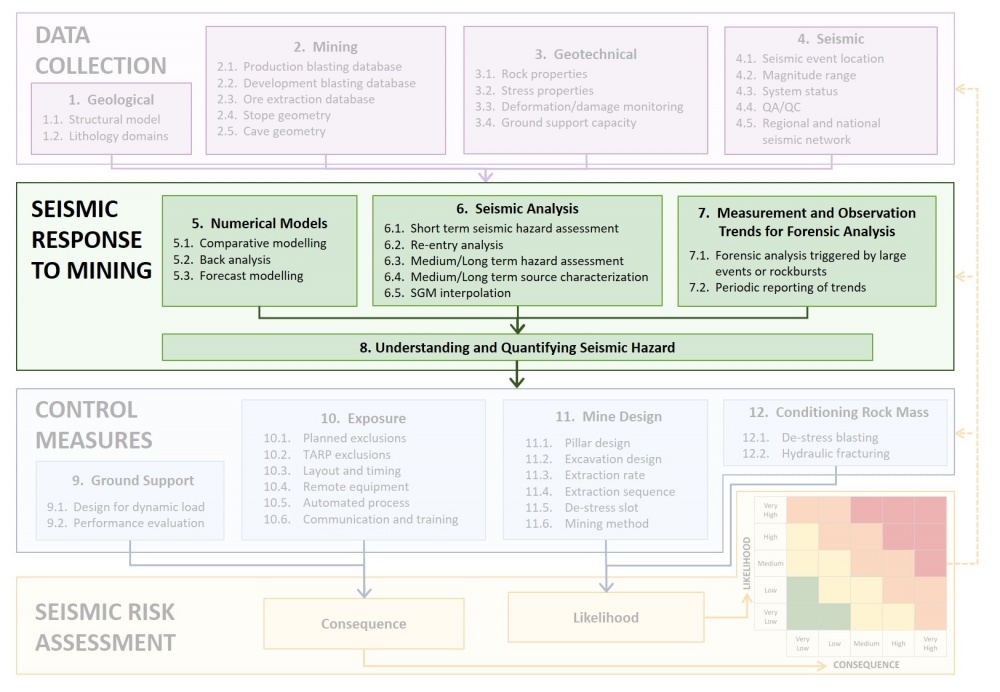Seismic Response to Mining: Difference between revisions
No edit summary |
No edit summary |
||
| Line 1: | Line 1: | ||
The green area of activities in the flowchart entitled “seismic response to mining” is where the seismic sources in the mine are identified, understood and the seismic hazard is quantified, before control measures are applied to reduce the seismic risk to a tolerable level. The main tools to investigate the seismic response to mining are numerical models, seismological models and case studies of historical seismic response to mining. | The green area of activities in the flowchart entitled “seismic response to mining” is where the seismic sources in the mine are identified, understood and the seismic hazard is quantified, before control measures are applied to reduce the seismic risk to a tolerable level. The main tools to investigate the seismic response to mining are numerical models, seismological models and case studies of historical seismic response to mining. | ||
<imagemap>Image:2.00_Seismic_Response_to_Mining.jpg|1000px|center | |||
rect 42 301 250 463 [[Seismic_Response_to_Mining|]] | |||
rect 265 318 579 496 [[5._Numerical_models|]] | |||
rect 607 318 1074 495 [[6._Seismic_analysis|]] | |||
rect 1101 318 1520 497 [[7._Measurement_and_observation_trends_for_forensic_analysis|]] | |||
rect 264 544 1416 585 [[8._Understanding_and_Quantifying_Seismic_Hazard|]] | |||
</imagemap> | |||
<!-- Created by Image Map Editor https://niebert.github.io/imgmap --> | |||
[[File:Figure 25.png|link=]] | [[File:Figure 25.png|link=]] | ||
Revision as of 11:15, 9 August 2018
The green area of activities in the flowchart entitled “seismic response to mining” is where the seismic sources in the mine are identified, understood and the seismic hazard is quantified, before control measures are applied to reduce the seismic risk to a tolerable level. The main tools to investigate the seismic response to mining are numerical models, seismological models and case studies of historical seismic response to mining.

Figure: Flowchart of the seismic risk management process emphasing the data collection activities

